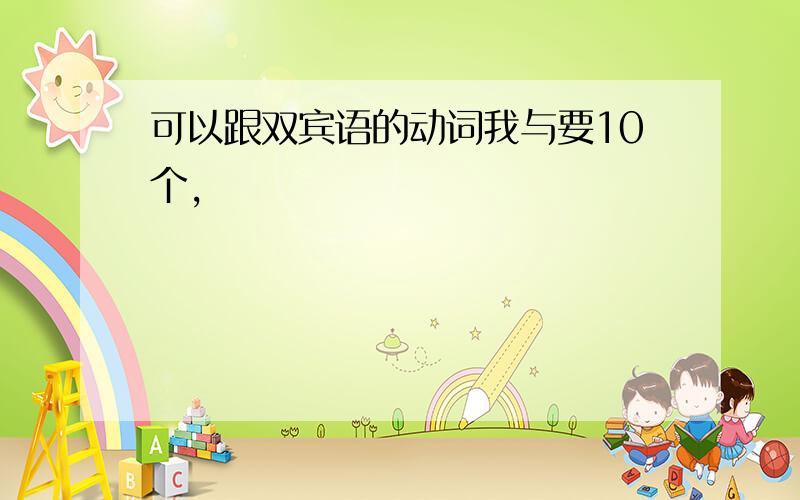可以跟双宾语的动词我与要10个,
来源:学生作业帮助网 编辑:作业帮 时间:2024/04/18 23:10:13

可以跟双宾语的动词我与要10个,
可以跟双宾语的动词
我与要10个,
可以跟双宾语的动词我与要10个,
可以跟双宾语的动词常见的有:ask, bring, buy, cost, fetch, give, hand, lend, pass, pay, read, return, sell, send, show, take, teach, tell, write等.
间接宾语通常放在直接宾语之前,若将间接宾语置于直接宾语之后,则要用介词to 或 for.
直接宾语是及物动词的直接对象.直接宾语指物.间接宾语通常是及物动词的动作所及的人,间接宾语指人.间接宾语一般放在直接宾语之前.
1. Our teacher told us a story .
(us为间接宾语)a story为直接宾语.
2. The sun gives us light and warmth.
(us为间接宾语,light and warmth为直接宾语)
3. We sent him a telegram. 我们给他打了电报. (him为间接宾语,a telegram为直接宾语)
间接宾语如果放在直接宾语之后.在表示“人”的间接宾语之前会出现介词“to”或“for”.在这种情况下,间接宾语前加“to”的有:
give , show , send , bring , read , pass , lend , leave (留给), hand (交给), tell , return , write , throw (仍)promise(答应)refuse(拒绝)等.
for的有:make , buy , do , get , play (演奏),order (命令),sing , pay (为…交钱)
例如:
(1)I gave him a book.
=I gave a book to him.
(2)He passed me the book.
=He passed the book to me.
(3)He wrote me a letter.
=He wrote a letter to me.
(4)He will buy me some books.
=He will buy some books for me.
(5)She made me a cake.
=She made a cake for me.